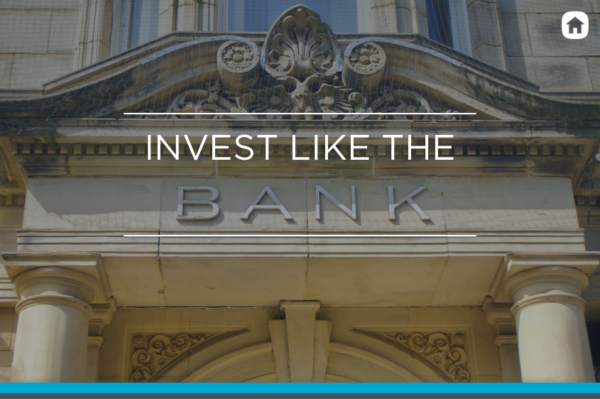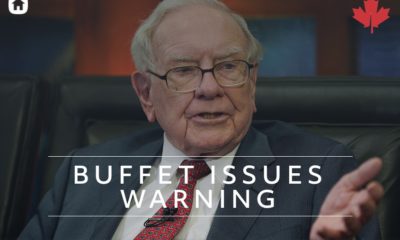Finance
Mortgages Are The Unsung Secure Investment For Your RRSP!

Before contributing to your RRSP's there are many elements that must be considered, including, how much to invest, maximizing tax credits, and even considering borrowing to max out previous eligible contribution room.
But no matter how these contributions happen or the source of funds all of them are now considering where should they invest their money.
Typically, the answer to this question is just a matter of calling your bank and finding out what the current GIC rates are or what mutual fund best matches your “risk tolerance”, but if you only do that, you could be missing out.
There is a strategy that is commonly used amongst institutional and high-net-worth investors (investors with more than a million dollars to invest) that allows them to earn secure, consistent, predictable returns sometimes in excess of 10%.
The strategy that I am talking about is not new, it’s easy to learn and in fact, the banks have mastered this strategy, and it has been their most profitable product for a very long time!
If you haven’t already guessed, (based on my occupation) the strategy is to lend your RRSP's in mortgages!
Before we move on, yes you can invest directly in mortgages from inside your RRSP, and yes, there is a simple way to do it, and I really do mean there is a simple way to do it, but before we talk about the “how” let’s talk about the “why” and destroy some long-standing myths in the banking industry.
How the Banks make money!
When it comes to getting investment advice from the bank there's a dramatic difference between what you are told to do with your money and what the bank actually does to make their own record profits.
The primary source of consistent revenue for the bank is in the form of mortgage lending. They basically have built up a system that allows them to borrow money from their customers at extremely low rates, and then lend that money out to others for a profit.
The banks want you to invest in products like GICs and daily interest savings accounts that currently earn in the neighbourhood of 1-3%, so they can lend out your money to generate their revenue.
Your deposits and investments create the capital the banks use to earn their revenue.
I know I am not telling you anything you don’t already know, and I know we have all come to accept the banks using our money as normal.
Why is this important to understand, because when you walk into the bank and asked them “WHAT SHOULD I DO WITH MY MONEY?” do they say:
“hey invest in some MORTGAGES you know they're super safe and secure, super low default rates, and plus if something goes wrong you have the security of the house itself, and by the way it's how we earn billions of dollars a year in revenue”
No, they don’t, they say…
“hey how about this shiny new high-interest savings account, it has great features like: it will earn less than inflation, it won’t even make you enough to live off in retirement but don’t worry we will lend it out and we’ll make the profit.”
I know that's not exactly what they say, but I think you get my CYNICISM.
Do want the banks do, not what they say!
Ultimately I want to teach you how to copy the BIG BANKS strategies and duplicate them inside your investment portfolio. I want you to turn your Investment Portfolio into your own personal “BANK”.
And there's really no mystery to how they did it, the foundation of the Banks income is secured against CANADIAN REAL ESTATE, and yours should be too!
Why Should You Invest in Mortgage Loans?
Security
The bottom line is mortgages are the most secure form of lending that is available.
Lending money in the form of a mortgage provides an Lender (like you) with a tangible asset to secure their investments to, (a house/property) and gives a fixed rate of return with a set repayment schedule. The protection that mortgages offer a Lender (like you) is well-established with the consequences being equally well established: foreclosure.
With proper property evaluation and reasonable loan to value ratios regardless of the borrower’s actual ability to repay the loan, the property protects the investor from all potential losses. If the borrower stops making payments, no problem, the property is put into foreclosure, sold and then the loan is repaid with costs and expenses recaptured.
With mutual funds or stocks when a fund is not performing, there is no way of recovering any lost value in the investment other than waiting for the fund or stock to recover; which it may never do; and places the investor at risk for a potential higher future loss if they decide to wait.
We have been taught to believe that investing has a scale, if you want to tip the scale to higher returns you have to give up security, low risk equals lower returns and high risk has potential for higher returns. But although this is true, in mortgage lending you can put a finger (or a house) on the scale, and increase your return without increasing the risk of losing your investment.
So if you underwrite your deal properly the risk associated with a borrower that is willing to 8-12% on a second mortgage can disappear when you have a home backing the mortgage.
Fixed Income Stream
With a mortgage, the lender gets a fixed monthly payment from the borrower which can be turned into the lenders personal income. Since the payment doesn’t change the lender knows exactly how much they are going to get monthly, they know exactly how long the income will last making it incredibly easy to budget.
With a mutual fund portfolio or stock portfolio, to get an income you must sell shares on a monthly basis and since these share values are not guaranteed you never know how many shares you must sell to get the income amount that you require.
These fluctuations in the share value make it tough to determine how long your portfolio will last you and once shares are sold they no longer can produce an income.
Rate of Return
With a mortgage, the rate is agreed to prior to the mortgage funds being sent to the borrower, and it is kept the same for the entire term. No changes, because the market is going down, or a war has started on the other side of the planet. The rate is the rate, period.
The rate is also set by the lender, so if you were lending out your money you pick the rate that you are willing to lend at for each situation, nervous about something in the borrower’s application, add a premium to the rate to mitigate the issue. It’s your decision.
With a mutual fund, no return is guaranteed. The representative must disclose to you that past performance is not indicative of future returns, and to see the growth an investor is told to hold an investment over an extended period of time, with no ability to predict the future value of a portfolio accurately.
What type of returns can you get from investing in a mortgage?
Lending your RRSP money out in the form of mortgages can be quite lucrative, with rates of returns up to 12-15% being seen quite commonly. I try to recommend that anyone that is lending mortgage money try to spread out their mortgages over a few properties, with some mortgages being a little more conservative, and talking on a few higher returns to balance out your portfolio to attempt to earn an average return of 6-7%.
This type of disturpution is more for managing access to cash and cashflow than managing risk. As previously mentioned, you can lend out all of your money at the higher rates without significantly increasing your risk, but if you do need to foreclose it can take a while to get your money back. Sometimes up to a year! So, you don’t want all your money, or all your loans tied up in mortgages where the potential for foreclosure is higher.
Remember the potential for foreclosure is low, but if it happens you won’t receive payments for quite some time, and if you are counting on that income for the retirement income you don’t want it to all of your funds stuck in foreclosure.
Section your lending portfolio into small chunks across different borrower ratings.
AAA Borrowers (4% - 7%) Return - Estimated 35% of your lending portfolio
These type of borrowers qualify for typical bank rates, they have good jobs, good income, and good credit, and yes they do from time to time need a little help. You will see these borrowers a lot in situations where for whatever reason they need a little extra money to pay off credit card debt or a line of credit but their mortgage doesn’t renew for a few years and the penalty to break the mortgage is high. Consolidating now even if they pay a higher rate for a private second mortgage can save them thousands in interest, and dramatically lower their payments each month.
Once their mortgage is open for renewal, they refinance with a major lender and money is returned to the Lender.
B Borrowers (7% - 10%) Return - Estimated 55% of your lending portfolio
These type of borrowers usually have reasonable credit but proving income could be difficult, like self-employed borrowers that just don’t meet the banks’ requirements. Also, real estate flippers are in this category they sometimes need all their money just to get the required deposit for a property and then need some money to help renovate the home.
These borrowers have good credit, good income, but little to no documentation to prove it, which makes getting mortgages from the bank hard, but very appealing to a private lender.
C Lenders (10% - 15%) Estimated 10% of your lending portfolio
These type of borrowers are facing significant financial troubles, with either credit history or are struggling with income. The reasons people end up in tough spot varies but the reality is they do have one thing going for them, a house. I believe that some of these individuals can still dig out of there troubles. Maybe they have just lost a job or have been laid off, and just need a few months of breathing room to keep them going. Whatever their reasons are, they deserve respect and if everything checks out we can still help them try to work through their challenges.
This is where I put in a caveat, as you get more experience in lending, and more comfortable in the process, you will find it is easy to go to the dark side. Some people are looking for any help they can get, they are willing to accept higher fees, and higher rates just to get them out of whatever situation they are trying to get out of. Please don’t take advantage of these people! Lending is meant to help both parties, please keep rates reasonable, don’t be charging 20-30%, with lenders fees, and application fees.
How bad is it if I have to foreclose?
If you could speak with a CEO of any major bank they will tell you that they hate foreclosing, but not for the reasons you may think. They don’t hate it because it takes them longer to get their money back, because even during the process they are still earning interest at the contracted rate, so time is not about the profit. They don’t hate it because it’s hard to do because it’s not, the process is as previously mentioned, well-established and mostly controlled by a lawyer they trust, so that’s not the issue either.
The real issue is the press!
Canadian banks are held to a very high standard and with a lot of foreclosures there are unseen factors, there maybe young kids living in the home, the borrower maybe 75 years old and has been living in that house for 50 years. If you do a couple of searches on the internet you will find stories just like these that no bank wants to be tied to. “Bank kicks Grandma out of her family home” or “Bank sends hardworking single mom with four kids on to the streets in foreclosure”.
The point is foreclosures can be emotional, every lender needs to consider their ability to follow through with recapturing their investment if it goes that far. For the big banks, they know they will follow through, but they are very scared of the potential fallout so they are very selective with their lending so they don’t expose themselves to unexpected bad press very often.
Disclaimer, I know there are mountains of government regulations pressing down on banks that also force them to be conservative, but those tougher rules are relatively new, and Canadian Banks have always leaned towards being conservative, even though they are now under even more pressure to be so.
But is this something that I can actually do?
Now you may be wondering is this possible? Can I use my RRSPs to invest in mortgages? The answer is yes, you absolutely can and it’s not hard when you have the right people on your team!
It works with all types of Canadian registered funds, like:
- RRSP’s
- Rif’s
- Lira’s
- TFSA’s
- Non-registered Investments
Who do I lend to?
For the average investor considering using mortgages in their own RSP, I recommend sourcing your loans through a mortgage broker like myself, don’t lend to friends, and consider lending to real estate investors.
Why should I source my private mortgages through a mortgage broker?
If you work with a mortgage broker like myself we will present you with already underwritten deals for you to review, most of the time we have already requested credit, gathered documents, and prepared an offer sheet that includes a recommended rate, and repayment schedule.
In short, this is what we do, and we have a constant flow of clients walking in our doors every day asking for mortgages if you’re looking to lend out money give a few mortgage brokers a call and you will likely have the job done very quickly!
Why shouldn’t you lend to friends?
This is an emotional answer. Of course, you can lend to friends but this is your retirement, it needs to be protected, and you don’t want emotions getting in the way or preventing you from foreclosing in the event that something goes wrong.
Foreclosure rates are very low in Canada the Canadian Bankers Association published that at the end of August only .15% of mortgages are in arrears across all of Canada.
Yes, you read that correctly, way less than 1% of all mortgages are in arrears, and just in arrears, that means that some of those mortgages won’t even go into actual foreclosure, that the borrower will catch up the payments in time and the mortgage will keep going.
So is foreclosure something you need to worry about, yes, but as I mentioned, if the mortgage is set up properly you don’t need to worry about it, but you do need to be prepared for it. Even if the odds of it happening are really low. So the question is if you lent money to a friend, and they couldn’t pay and you were forced to foreclose, could your friendship withstand the "For Sale Sign" in their front yard?
Reach out to a mortgage broker, and let them help you lend your money out, with way less heartache, and way easier too!
Consider lending to Real Estate Investors?
When a real estate investor fails, whether it's a rental or a flip there is way less emotional baggage getting in the way. The house is likely vacant purchased at a discount and almost fully renovated and nearly ready to be sold at a profit. That means it likely only needs a little more work to prepare for sale at a higher value than it was purchased at, and you guessed it, a vacant house means no kids, or grandmas being pushed out onto the streets so way less emotional baggage!
As well if the property is a rental with a current tenant, these properties can be easily sold, and most of the time the only inconvenience to the existing tenant is a realtor walking through the house a few times with some prospective buyers. Yep, the tenants can stay, so again no kids or grandma’s out on the streets!
There are two more really good reasons to work with investors, they know what you are offering them is valuable so they are willing to pay a little higher rate to put your money to work for them. The other is that they will likely do a lot of transactions, so if you find a good one, he will likely borrower your money again and again and again.
What would it feel like to you if you knew...
What would it feel like to you if you knew that your RRSP money was secured against a physical asset like a house? Would it make you feel safer, knowing that there is an actual asset protecting you in case something went wrong? Would you feel more confident about your retirement, knowing that your investments are locked in at a rate you choose, giving you the power to more accurately forecast your retirement income or the growth inside your investment portfolio up until retirement?
I bet you would, and it is for that reason that I believe this strategy is worth learning.
If you want an additional resource to learn even more you can read The RRSP Secret by Greg Habstritt.
Greg’s book is as much of a “tell-all” of how the financial industry misuses your trust and loyalty as a client as much as it is a description of one of the best-kept RRSP secrets in Canada as well provides the tools and knowledge you need to put them into action for yourself.
This book is a must-read for every Canadian that has more than $10,000 invested in RRSPs TFSAs or even RESP’s.
Summary
Just to wrap up if you want to learn more about this strategy please get your copy of the book and call me.
As a Verified Mortgage Planner, I can reinforce the lessons that are taught in the book and give you a set of rules to follow when reviewing applications and even from time to time introduce you to pre-screened (pre-approved) people that are willing to borrow from you.
-

 Buying a Home5 years ago
Buying a Home5 years ago3 Simple Rules to follow to ensure credit doesn’t stop you from buying a home!
-

 Credit6 years ago
Credit6 years agoWhat Happens to My HELOC When I Sell My Home?
-

 5 Mortgage Secrets6 years ago
5 Mortgage Secrets6 years ago5 SECRETS THE BANK DOESN’T WANT YOU TO KNOW ABOUT YOUR MORTGAGE
-

 Business4 years ago
Business4 years agoToronto, Ontario and Vancouver real estate boards urge suspension of open houses
-

 Buying a Home6 years ago
Buying a Home6 years ago6 Reasons to get Pre-Approved for a Mortgage Early
-

 5 Mortgage Secrets6 years ago
5 Mortgage Secrets6 years agoTHE PENALTY COVER UP Mortgage Secret 3 of 5
-

 Business4 years ago
Business4 years agoBuffett says economy is slowing amid virus fears
-

 Buying a Home6 years ago
Buying a Home6 years ago5 Steps to a Guaranteed Mortgage Approval







